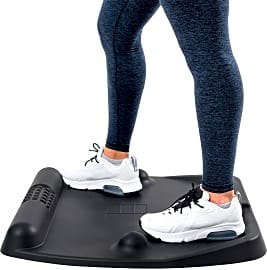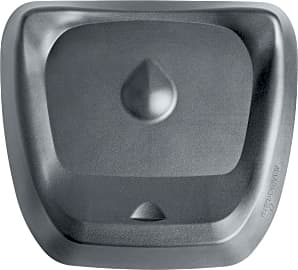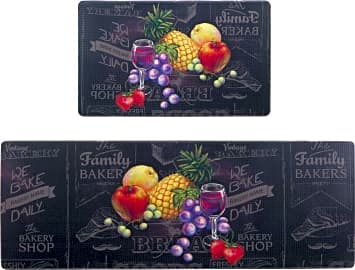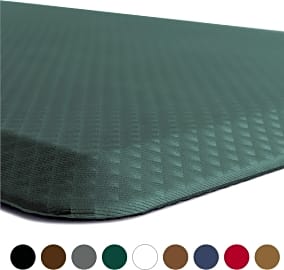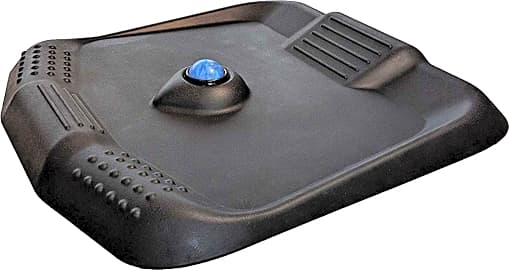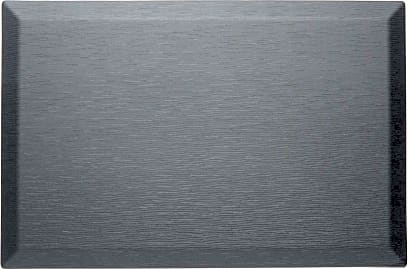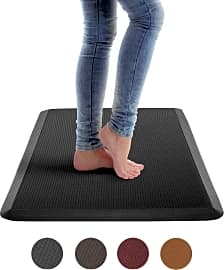The 9 Best Anti-Fatigue Mats

This wiki has been updated 38 times since it was first published in July of 2015. If you spend a lot of time on your feet in the kitchen, in front of a standing desk, or at a workbench, some cushioning can make all the difference in the world for those prolonged periods of being upright. These anti-fatigue mats provide shock absorbent padding on hard floor surfaces to ease the stress on your legs and spine, allowing you to finish the job with a lot less pain and discomfort. When users buy our independently chosen editorial choices, we may earn commissions to help fund the Wiki.
Editor's Notes
April 23, 2021:
A good mat is essential to leg and back health, especially if you work full-time standing up. We particularly like the CubeFit TerraMat for standing desk use, although if your feet aren't very large, you can probably get by with the less expensive Urvigor Not-Flat.
Those were our only two new additions this round, and the Butterfly Kitchen Comfort is still our top choice for those who want something that both looks nice and works well. The Kimode 2-Piece is a more casual set made for home kitchens, and the Imprint Cumulus Pro and Kangaroo Premium are both nice enough to fit well in corporate offices.
March 03, 2020:
When it's time to choose the best anti-fatigue mat for your situation, the first decision you will need to make is if you want a flat or molded option.
The main places where you find an anti-fatigue mat is in the kitchen or paired with a standing desk at the office or a work bench in the garage.
We added the non-flat, molded options like the Ergodriven Topo and the Sky Mat Genius primarily for the office where you might find yourself standing in one place for hours on end. No matter the quality of the padding, to avoid stiffness your legs and feet need the stimulation that can come with the raised edges and nooks and crannies your feet can mindlessly explore while staying on task.
This type of mat won't do if you're on your feet, but need to move around as you will do in a kitchen or workshop. For that we've provided quality flat choices, including the Butterfly Kitchen Comfort and the Kimode 2-Piece for kitchens where style is as important as comfort, plus more utilitarian choices like the Imprint Cumulus Pro and the Kangaroo Premium that are intended to blend with their surroundings.
Keep Your Feet Moving
That's because circulation and muscle movement will significantly reduce fatigue.
Caring for your feet will, by extension, care for your whole system, as the comfort with which you stand drastically affects the alignment of your spine, which can either support or hinder the flow of vital information along the pathways of your entire nervous system.
A good pair of shoes can only do so much, and if we're talking about you standing at your kitchen sink, for example, doing a long day's worth of family dishes, you might even be barefoot. So, we turn to an anti-fatigue mat for comfort and care.
If you've ever stood still for long periods of time and felt your feet and legs getting tired, you might also have noticed that it actually feels good to move around afterward. You'd think that your lower body had gotten so tired that it would hate to have to move, but the opposite is actually true.
That's because circulation and muscle movement will significantly reduce fatigue. With that in mind, the manufacturers of these anti-fatigue mats actually make them so that you'll find it ever-so-slightly difficult to balance yourself on them. This results in a slew of micro-movements in your feet and legs, as your body unconsciously attempts to maintain its balance. These movements keep your muscles warm and loose, and they increase circulation throughout the lower body, reducing fatigue.
You'll find anti-fatigue mats made of anything from wood and vinyl to PVC and rubber, but they all have that little quirk of instability in common. Some will have additional features like a textured grip or a layer of protection against electrical discharge. That last feature is most common in mats used in industrial settings, but it's a nice thing to know you've got.
Where Do You Stand?
Unless you've finally bitten the bullet and bought that pub you were always talking about buying, you're probably looking into these mats as a means of reducing fatigue in the kitchen. It's the place in our homes in which we spend the majority of our standing time. Then again, you may be an outlier.
I use a standing desk, for example, to keep my back from turning into jelly when I'm writing for hours on end. From my days spent standing around for 12 hours at a time at an old sales job, I learned the value of a good anti-fatigue mat, and I employ one in my office.
I made the mistake, at first, of trying to be as economical with the space as possible, and the first mat I bought was too small.
To give you a little perspective on how to choose your own mat, I'll let you in on my process from a few years ago. The first thing I had to consider, and that you, too, need to consider is space. No, don't go thinking about black holes and dark matter; I mean the space in which you plan to install your mat.
Most of the mats on our list come in at least two sizes, but they aren't all uniform in their options. I made the mistake, at first, of trying to be as economical with the space as possible, and the first mat I bought was too small. If you're positioning yourself in front of the sink, for example, you don't want a mat that's only the width of the sink space. Having a little extra room is vital so that you aren't stepping on and off the mat every time you adjust your body.
Then, there's the look of the thing. Not a lot of people invade my work space, and I'm thankful for that, but I have a mat in my kitchen as well, and anyone can see it. That means two things. First, you want a mat that won't clash with the decor of the room. Second, you want a mat that won't require daily cleaning to keep the space looking fresh.
Brighter colors will fade faster and show more food particles more quickly, necessitating more consistent cleaning. Darker colors look a little less welcoming, though, so try to find the right balance for your style.
Weaving A Mat's Tale
Matting of one kind or another dates back millennia. If you don't count a spread of threshing by the doorway or the mouth of a cave as a mat, then you have to start its history with the history of weaving.
Between then and roughly 3,500 BCE, Chinese cultures developed a similar technique applied to the silk thread produced by certain native worms.
Weaving techniques developed in Turkey and Egypt between 7,000 and 5,000 BCE, as evidenced by both linen cloth samples discovered by archeologists and by hieroglyphics and other artworks of the region and the time period. Between then and roughly 3,500 BCE, Chinese cultures developed a similar technique applied to the silk thread produced by certain native worms.
Matting in the far East took on a much more important role in home decor than it did in the west, as houses in China and Japan were covered wall to wall in mats, much the way we use carpet today.
Smaller, more single-purpose mats came later, and beleaguered factory workers throughout the industrial revolution stood on anything from an old shirt to pieces of wood to ease the ache in their feet. It was in those factories heading on through the 20th century that the anti-fatigue mat was born.


